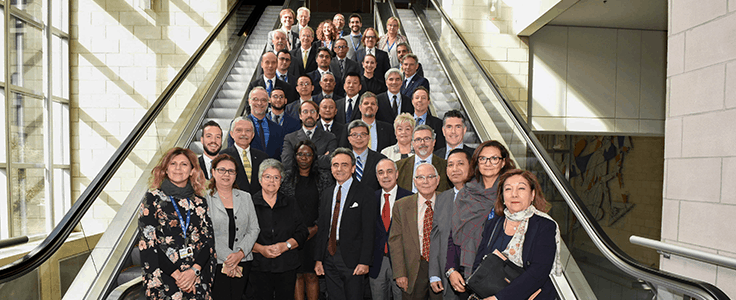An aircraft accident is an unexpected, and usually catastrophic, event. Concern for persons who have suffered distress and loss as the result of aircraft accidents has led to increased efforts within the aviation industry to establish means for addressing the needs of victims and their families in a timely fashion.
In support of this, a special session took place during the 13th ICAO Air Navigation Conference that was held at ICAO Headquarters earlier this month. During this session, the development and implementation of the relevant ICAO instruments and documents, and regulations, policies and plans of States and other international organizations was reviewed.
“ICAO is attuned to the needs of families and victims of aircraft accidents, and stands ready to continue working with the aviation community and family associations towards the progress of this subject of utmost importance,” declared the President of the ICAO Council, Dr. Olumuyiwa Benard Aliu, in his remarks to the participants, which included representatives of Argentina, Australia, Brazil, China, France, Italy, the Netherlands, Malaysia, Spain, the United States, Airports Council International, the International Air Transport Association (IATA), and the Air Crash Victims’ Families’ Federation International.

The Session was a crucial opportunity for enhancing the momentum towards the full implementation of assistance to aircraft accident victims and their families throughout the international civil aviation network.
Aviation safety is at the core of ICAO’s fundamental Objectives. ICAO is constantly striving, in close collaboration with the entire air transport community, to further improve aviation’s successful safety performance while maintaining a high level of capacity and efficiency. This is achieved through:
- The development of global strategies contained in the Global Aviation Safety Plan and the Global Air Navigation Plan.
- The development and maintenance of Standards, Recommended Practices and Procedures applicable to international civil aviation activities which are contained in 16 Annexes and 4 PANS (Procedures for Air Navigation Services). These standards are complemented by more than 50 Manuals and Circulars which are providing guidance on their implementation.
- The monitoring of safety trends and indicators. ICAO audits the implementation of its Standard, Recommended Practices and Procedures through its Universal Safety Oversight Audit Programme. It has also developed sophisticated tools to collects and analyse a vast array of safety data which allows to identify existing and emerging risks.
- The implementation of targeted safety programmes to address safety and infrastructure deficiencies.
- An effective response to disruption of the aviation system created by natural disasters, conflicts or other causes.
